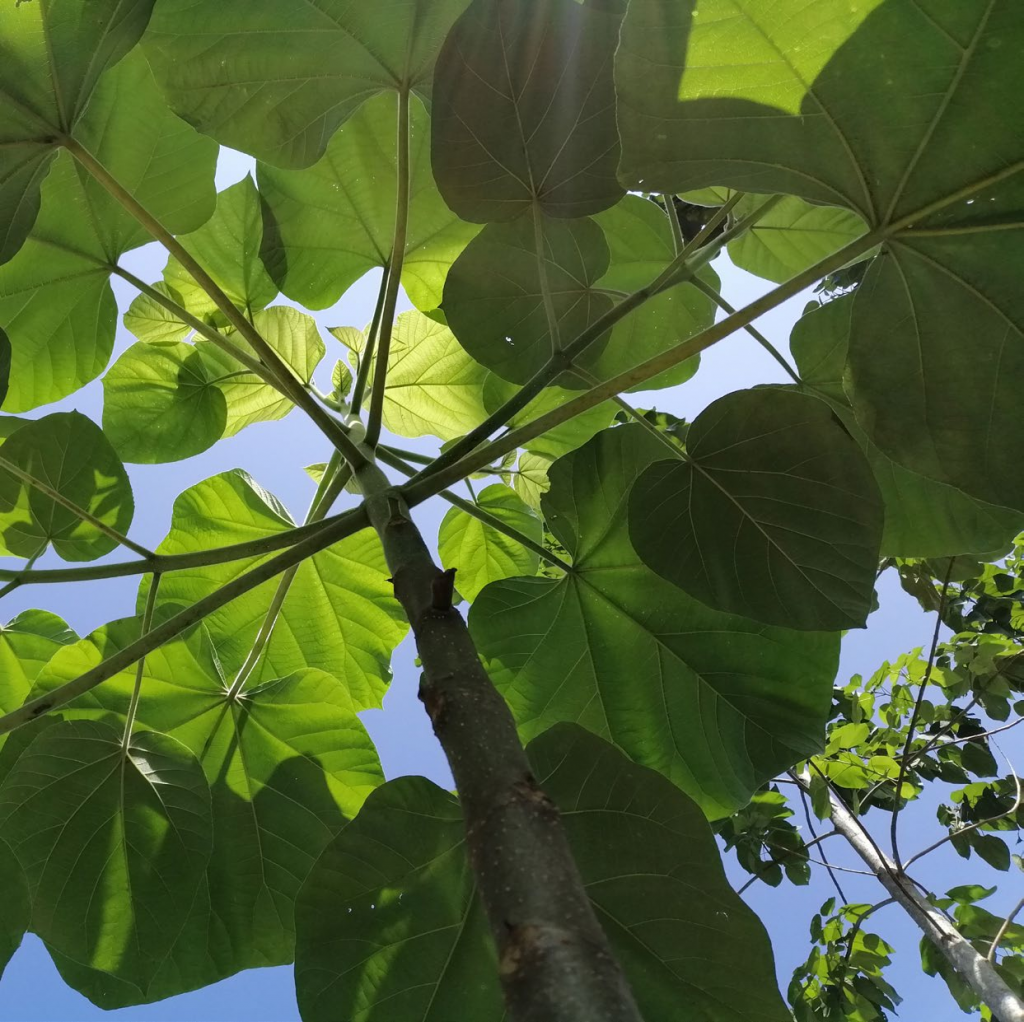The Kiri tree
The Kiri tree (Paulownia) is uniquely suitable because it is the fastest growing hardwood tree in the world and is ready to hit after eight to ten years.
It also has excellent soil, water and nutrient storage properties. It is resistant to insects and pests and is extremely adaptable from a climatic point of view.
With their long roots, a kiri tree reduces soil erosion and with their large leaves release significant amounts of oxygen.
Paulownia wood, which comes from the Kiri tree, is in great demand due to its outstanding properties.

Easy to dry
Air cure - the wood will air dry in about 30 days without warping (loss of 50 percent of its moisture in just 48 hours outdoors, on a dry surface)
Strength and stability
Paulownia wood has the highest strength Weight ratio compared to any other wood in the world. It is also known as the "aluminium of wood". It won't warp, splinter, or crack with quick drying. It is insect resistant and remains stable even in high humidity. Paulownia wood grown on plantations is mostly knot-free and holds nails and screws very well without the need to drill pilot holes. In comparison tests, both yellow poplar and white pine split much earlier than paulownia wood.
Lightweight
The weight of paulownia wood is only a third of the weight of comparable commercial wood. At 250 - 270 kg / m3 it is almost 70% lighter than oak and only half as heavy as pine.
Energy efficiency
The ignition temperature of approx. 420 degrees Celsius is almost twice as high as that of most conventional hard and soft woods. As a result, the wood has a high level of fire resistance and burns twice as long as other types of wood.
Great insulating properties
Paulownia wood is a very good insulating material. According to experts, the R-value, an indicator for the anti-slip properties of floor coverings defined in accordance with international DIN 51130, is twice as high as that of pine or oak.
Easy to process
Industry and trade appreciate the versatility of Paulowia wood in woodworking.
Middle height
after 10 years

20 m Kiri tree
10 m Teak tree
2 m Oak
CO 2 absorption
of a tree after 10 years

600kg Kiri tree
50kg Teak tree
50kg Oak


